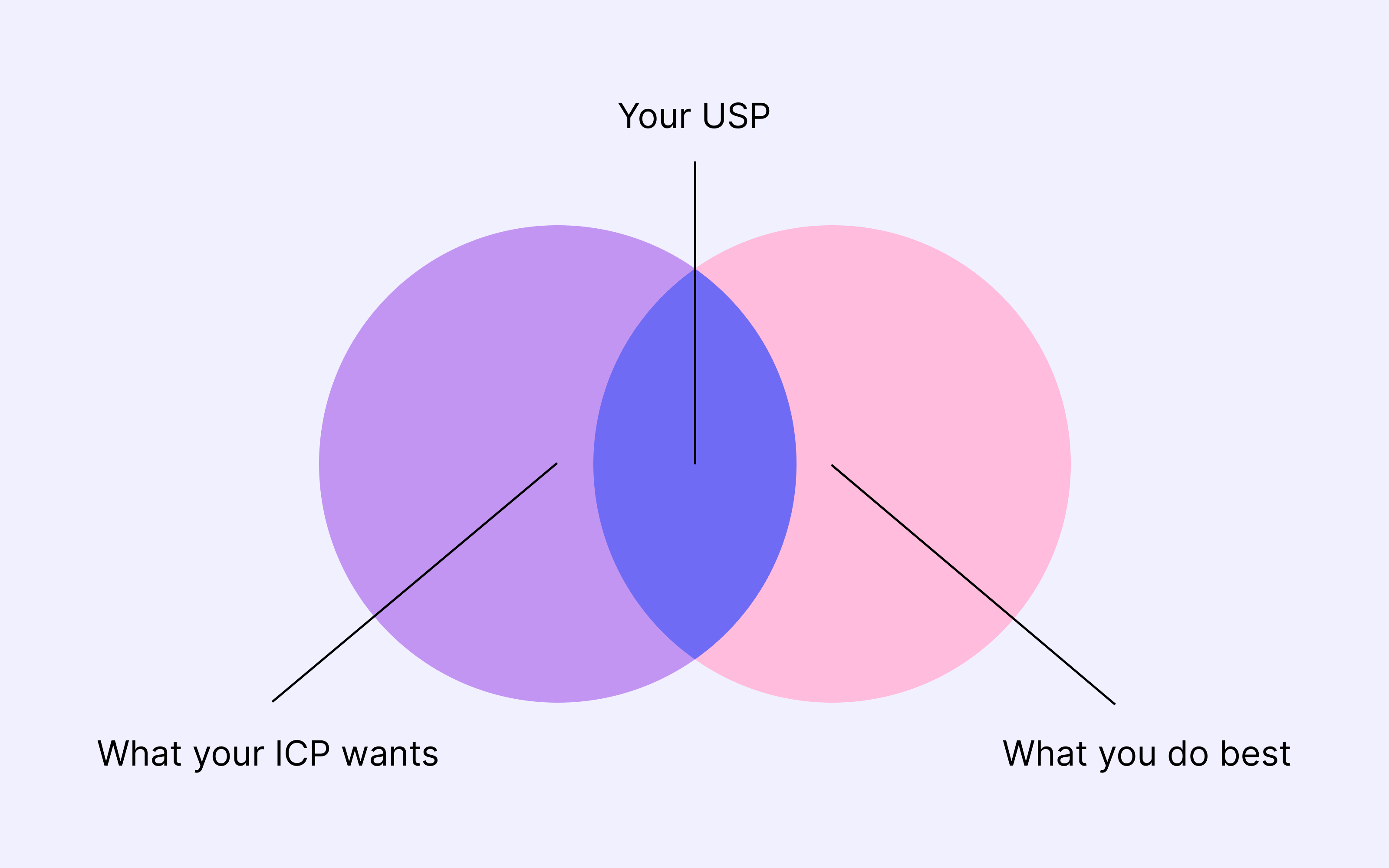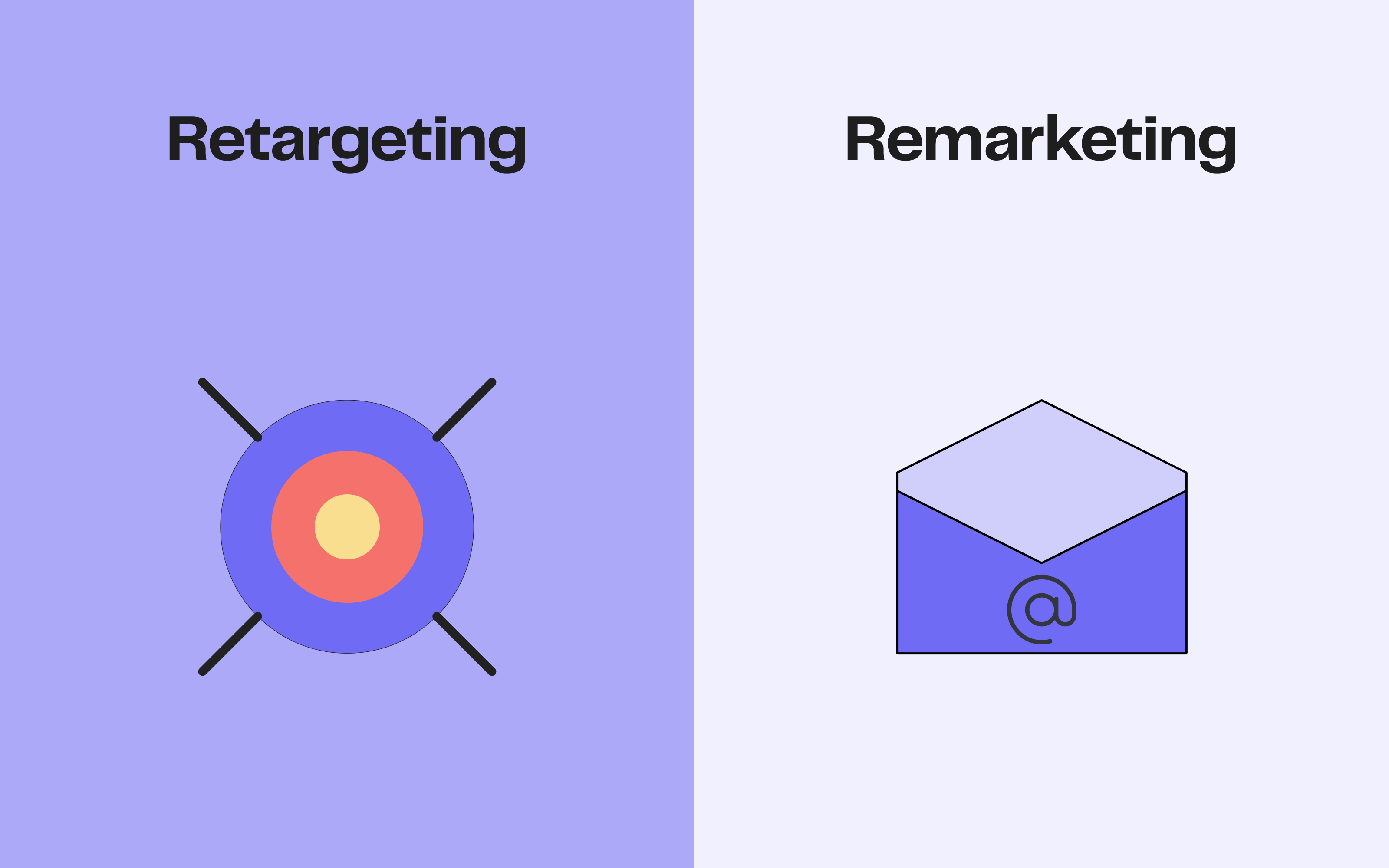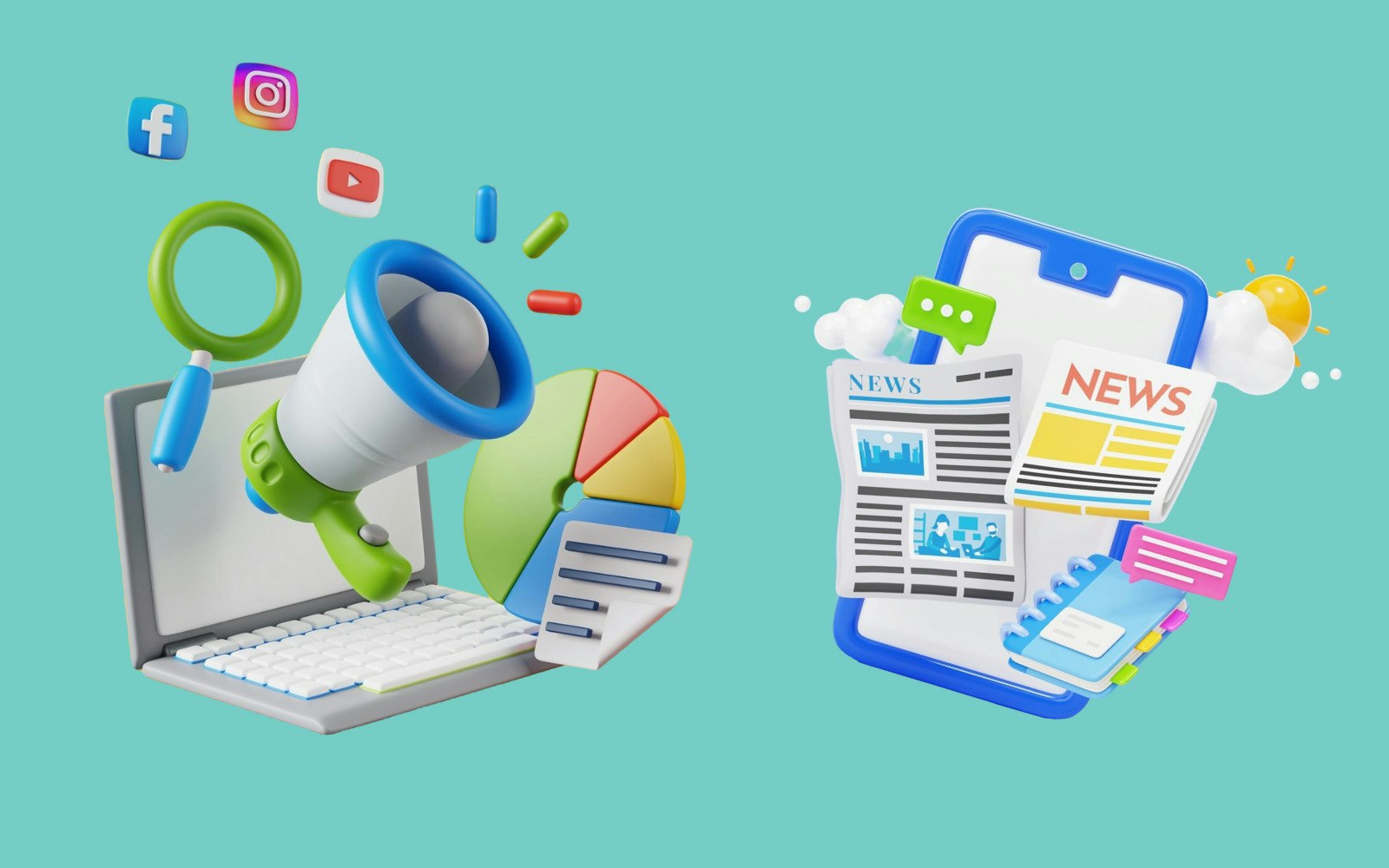
The keys to outbound marketing: definition and strategies
10min • Last updated on Dec 11, 2025

Olivier Renard
Content & SEO Manager
Outbound marketing is the term used to describe actions taken to reach a target audience. It is also known as ‘push marketing’.
It involves proactively sending a message to a prospect. It is a complementary approach to inbound marketing, which focuses on attracting customers naturally.
Things to remember:
The aim of outbound marketing is to send information (about a brand, an offer, a product) to prospective customers.
Examples include advertising, flyers, e-mails and cold calls.
It allows you to reach a large audience quickly and target specific segments.
It is generally more expensive and less effective than inbound strategies.
Outbound marketing is based on a set of techniques known as interruption. A mainstay of traditional marketing, it has evolved with the rise of digital.
🤔 Find out what outbound marketing is in this article. It offers insights on how to integrate it effectively into your overall strategy. Find concrete examples of successful campaigns and best practices for optimising their impact.
Ready to explore? Let's get started! 💪
What is outbound marketing?
Definition and principle
Outbound marketing is a traditional method of reaching out to potential customers, rather than waiting for them to express spontaneous interest. This proactive strategy is based on techniques for distributing messages to a wide audience. Including prospects who are not actively looking for your products or services.
Also known as ‘push marketing’, it aims to arouse interest or generate leads through direct, targeted actions. This is particularly the case when a company starts a telephone call campaign or distributes flyers to promote a new product.

Best ever call campaign (The Wolf of Wall Street)
Difference with inbound marketing
In contrast, inbound marketing, or ‘pull marketing’, is a strategy based on attraction. Initiated by Seth Godin and popularised by Hubspot, its aim is to attract prospects organically.
To do this, we define an ideal customer, your buyer persona. Then we bring them value through different formats on the web or social networks:
Blog articles, which promote natural search engine optimisation (SEO)
Videos (on platforms such as Youtube or TikTok)
White papers
Posts (Linkedin, Instagram, Facebook etc)
Outbound marketing, on the other hand, focuses on direct actions via channels such as telephone calls, paid advertising or events. These two approaches complement each other and meet distinct needs:
Inbound marketing seeks to build long-term relationships by offering value.
Outbound marketing aims to achieve rapid results to develop your business through proactive actions.
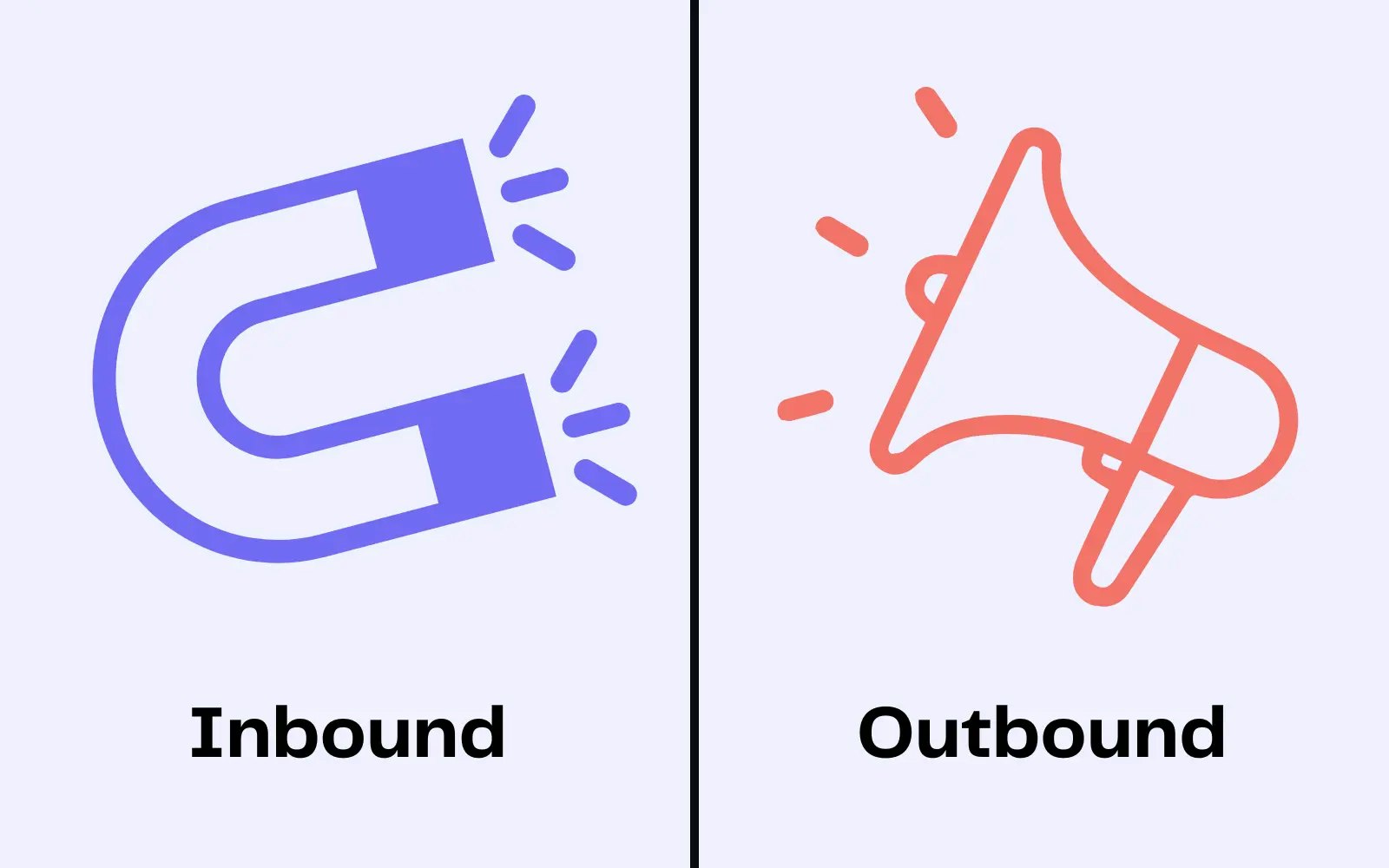
Inbound vs Outbound
For example, a SaaS publisher might publish a guide to optimising productivity, using an inbound approach. And at the same time launch an outbound campaign with targeted Meta Ads to promote its software.
The main outbound marketing channels
Outbound marketing relies on a variety of traditional and digital channels to maximise its reach:
Emails and telephone calls: Often used in B2B businesses, cold emailing and cold calling offer direct contact with targeted people.
Paid advertising: This allows you to reach a large audience in different ways. Online, these include banner ads and sponsored ads on social networks. Offline: TV and radio spots, press advertising and 4x3 billboards.
Events and trade shows: Attending conferences or organising webinars allows direct interaction with prospective customers.
Direct mail and printed materials: More traditional, brochures, catalogues and printed materials are still a widespread form of outbound marketing.
To optimise your return on investment (ROI), you need to select these channels according to your target audience's habits.
Successful examples of outbound marketing
1. Traditional advertising campaigns
A historic technique, traditional advertising continues to prove its effectiveness over time.
Billboards: Even in the digital age, they remain a powerful means of communication for capturing attention. Samsung's innovative ‘Tiger in the city’ campaign in Times Square springs to mind. It featured a 3D tiger to promote the low-light photography capabilities of its Galaxy smartphones.
Television commercials: Brands vie with each other in creativity and boldness to arouse interest and inspire consumers. The highlight of the Super Bowl is the half-time show, which often features memorable adverts. Dunkin' Donuts made its mark in February 2024 with its advert “The DunKings”, featuring Ben Affleck and Jennifer Lopez in a humorous parody of their daily lives.
Radio advertising is also an effective vector for outbound marketing. They are based on catchy jingles or melodies that remain engraved in listeners' minds after they have been broadcast.

Tiger 3D Samsung advert in Times Square
2. Emailing
The first email was sent in 1971 by Ray Tomlinson. By combining powerful tools and well thought-out strategies, it remains an effective channel. Email campaigns enable companies to contact a large audience quickly. Thanks to effective targeting of potential customers, they generate qualified leads, which improves return on investment.
B2C email marketing: personalisation and automation
In B2C, brands rely on attractive, personalised emails to capture consumers' attention. Platforms such as Mailchimp, Brevo and Klaviyo are particularly well suited to managing these sequences. They offer advanced segmentation and automation features.
PayPal has designed a hard-hitting email campaign to promote its friend-to-friend bill-sharing solution. Targeting young and connected people, the company highlighted a simple interface and clear benefits, accompanied by an engaging call to action. The result: a significant increase in use of the platform.
LinkedIn: the key tool for B2B prospecting
For B2B, tools such as HubSpot, Salesforce, Adobe and Zoho enable you to manage personalised sequences, with automated workflows.
Alongside email, LinkedIn has become a key tool for B2B sales prospecting. Its Sales Navigator tool precisely targets professionals according to their sector, position or location. Complementary solutions such as Lemlist, Apollo, Zeliq and Phantombuster optimise this process by automating the sending of personalised messages and making it easier to track interactions.
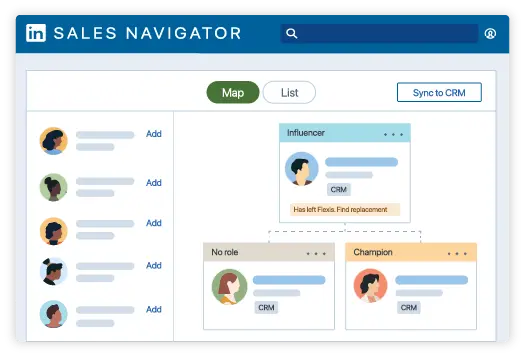
LinkedIn Sales Navigator
Key factors in effective email campaigns
Personalisation: In both B2C and B2B, it is essential to adapt content according to behaviour or needs. For example, a B2C e-tailer might recommend products based on purchase history, while a B2B company might offer a white paper on a specific subject.
Relevant content: Offer real added value, such as exclusive promotions, industry insights or free demos.
Design and user experience: Use attractive, mobile-optimised designs with clear calls to action.
Automation, A/B testing and tracking: The platforms make it possible to programme mailings at the ideal time, while measuring key performance indicators (KPIs) via detailed dashboards.
Thanks to its AI engine, DinMo's composable CDP helps you programme personalised multi-channel experiences.
3. Social Ads, Display and SEA
Online campaigns such as Social Ads and display banners are essential for outbound marketing. They allow you to quickly capture the attention of an ultra-targeted audience. Thanks to platforms such as Meta Ads (Facebook and Instagram) or Google Ads, companies can distribute paid advertising to specific segments defined by criteria such as age, interests or location.
Nike uses ads on Instagram to promote its new range of running shoes. By combining short, dynamic videos with precise targeting of sports enthusiasts, the brand generates high levels of engagement and maximises conversions.
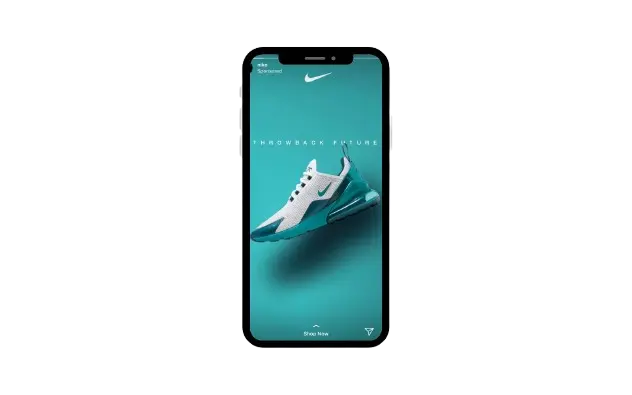
Nike Running shoes Instagram Ads
Booking.com uses display banners to retarget users who have consulted accommodation. Personalised offers and limited promotions encourage bookings.
Is SEA outbound or inbound marketing?
Although it belongs mainly to outbound marketing because of its intrusive and paid nature, SEA (Search Engine Advertising) is based on a hybrid principle:
Users express their search intention (a mechanism specific to inbound marketing)
Then the brand initiates contact by displaying paid ads, which is typical of outbound advertising.
By combining these two dynamics, SEA is positioned as an ideal strategy for capturing prospects who are in an active phase of reflection.
Online campaigns offer a broad and rapid reach. They are a powerful tool for generating leads and maximising return on investment. In fact, unlike traditional channels, digital allows very precise measurement of performance. Acquisition and growth managers keep a close eye on indicators such as ROAS (Return On Ad Spend) or cost per acquisition (CPA).
Best practice
3 essential keys to outbound marketing: defining your target, delivering value and personalising your messages.
Personalising messages
The key to success in outbound marketing is personalised communication. You can understand your customers' preferences and behaviours through in-depth analysis of data from multiple channels.
As a composable CDP (Customer Data Platform), DinMo makes it easy to process this information from your customer database. It allows you to precisely segment your audience into homogeneous groups, without any technical knowledge.
In retail, for example, send a personalised email with the customer's first name, based on their past interactions, and suggest complementary products or exclusive offers. By integrating dynamic content, such as up-to-date recommendations, you enrich the experience and capture attention.
Choosing the right channels for your target
The choice of channels is crucial to the success of your campaigns. By testing different media, you can identify the most effective ones for your audience.
In B2C: TV advertising, emailing and Social Ads (on Instagram, Snapchat or TikTok, for example) are particularly effective for reaching a large audience.
In B2B: prospecting on LinkedIn, combined with social selling tools and targeted telephone canvassing, offer convincing results.
Search Engine Advertising (SEA) is ideal for targeting prospects based on their search intentions, by placing your ads directly in front of interested users.
Here again, a composable CDP makes it easy to synchronise customer data in real time. By scoring each customer's preferred channel, DinMo can activate multi-channel campaigns tailored to each profile.
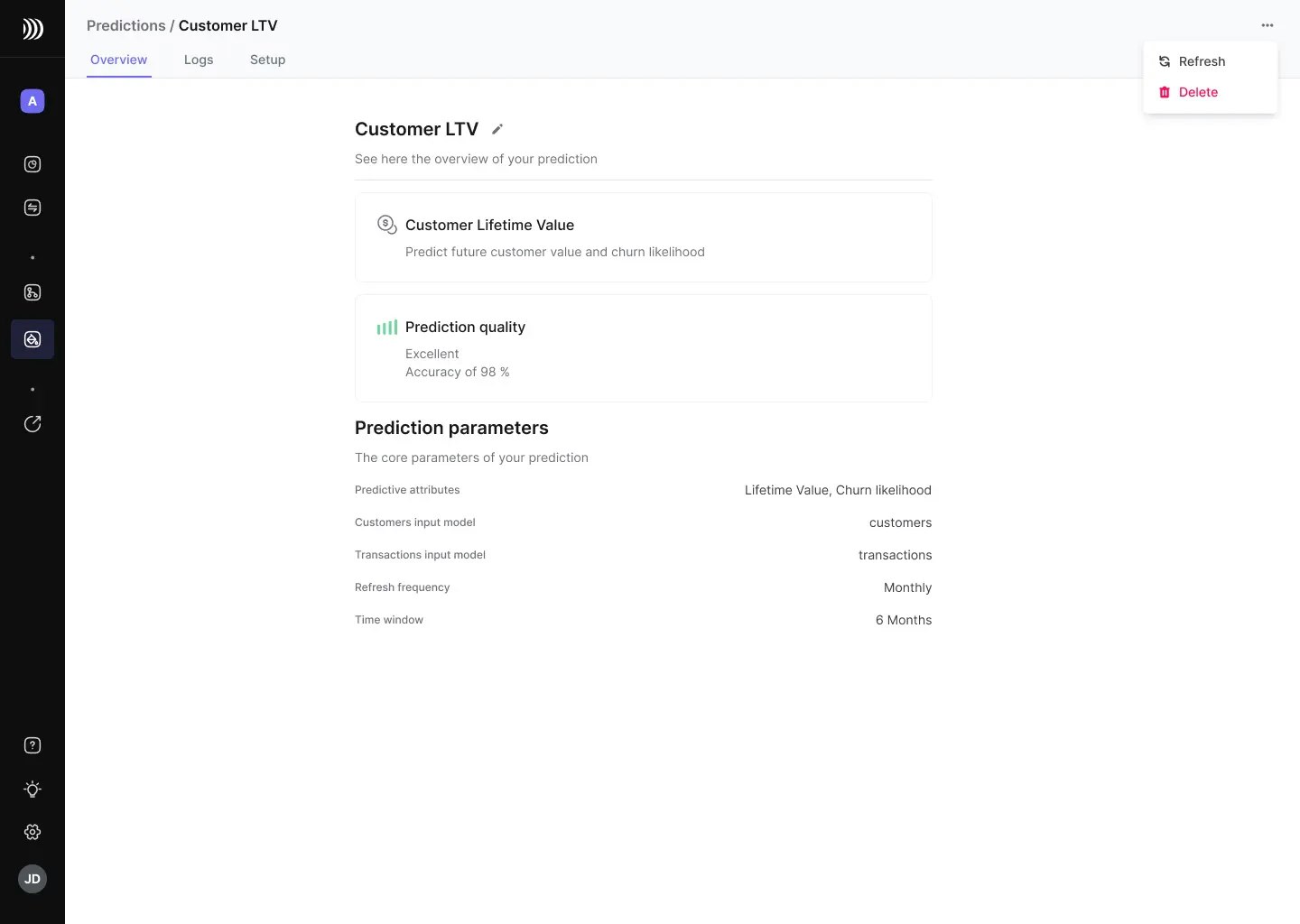
Optimise Customer Lifetime Value with DinMo
Measuring and analysing return on investment (ROI)
Whatever the channel, evaluate your performance to adjust your strategies. Traditional formats (TV, radio, billboards) often focus on reach or awareness KPIs.
In digital (emailing, SEA, Social Ads), performance is measured in terms of engagement and conversion. Use tools like Google Analytics, Matomo or HubSpot to track your top KPIs:
Outbound acquisition channel | Main KPIs |
|---|---|
TV or radio advertising | Reach (GRP, audience rate), ad recall, purchase intent |
Billboards | Reach (estimated impressions), local interactions (QR codes, calls, visits) |
Telephone canvassing | Rate of contacts made, rate of conversion to appointments, cost per qualified lead |
Events and trade shows | Leads generated, number of appointments made, post-event conversion rate, ROI (Return on Investment). |
Emailing (CRM) | Deliverability rate, open rate, click-through rate (CTR), rejection rate, conversions, ROI. |
SEA | CTR, CPC (cost per click), CPA (cost per acquisition), ROAS (Return On Ad Spend), ROI, CPM (cost per thousand impressions). |
Social Ads (SMA) | Rate of engagement (likes, shares), ROAS, ROI, CTR, CPM, CPC, CPA. |
The main outbound KPIs to track
A/B testing enables you to identify the most effective messages and optimise your actions on an ongoing basis. A message, however relevant, is not enough. By analysing the data, you can adjust your budgets and maximise your ROI.
Outbound marketing remains an essential part of any acquisition strategy. Sometimes perceived as too invasive, it can be used to quickly reach potential customers and generate qualified leads. Its effectiveness depends on precise implementation, tailored to the expectations of the target audience. Personalising messages, choosing the right channels and rigorously analysing performance are all factors in the success of your campaigns.
The use of advanced segmentation techniques is essential for effectively targeting your audience. They enable you to create more relevant communications and increase the conversion rate.
Composable Customer Data Platforms (CDPs) facilitate this approach by enabling you to activate your data and adjust strategies in real time. They offer an undeniable advantage for reinforcing the relevance and effectiveness of your digital actions, whether in emailing or Social Media Advertising (SMA), for example.
Combined with a solid inbound strategy, outbound marketing remains an essential lever for achieving your sales objectives and building customer loyalty.



















